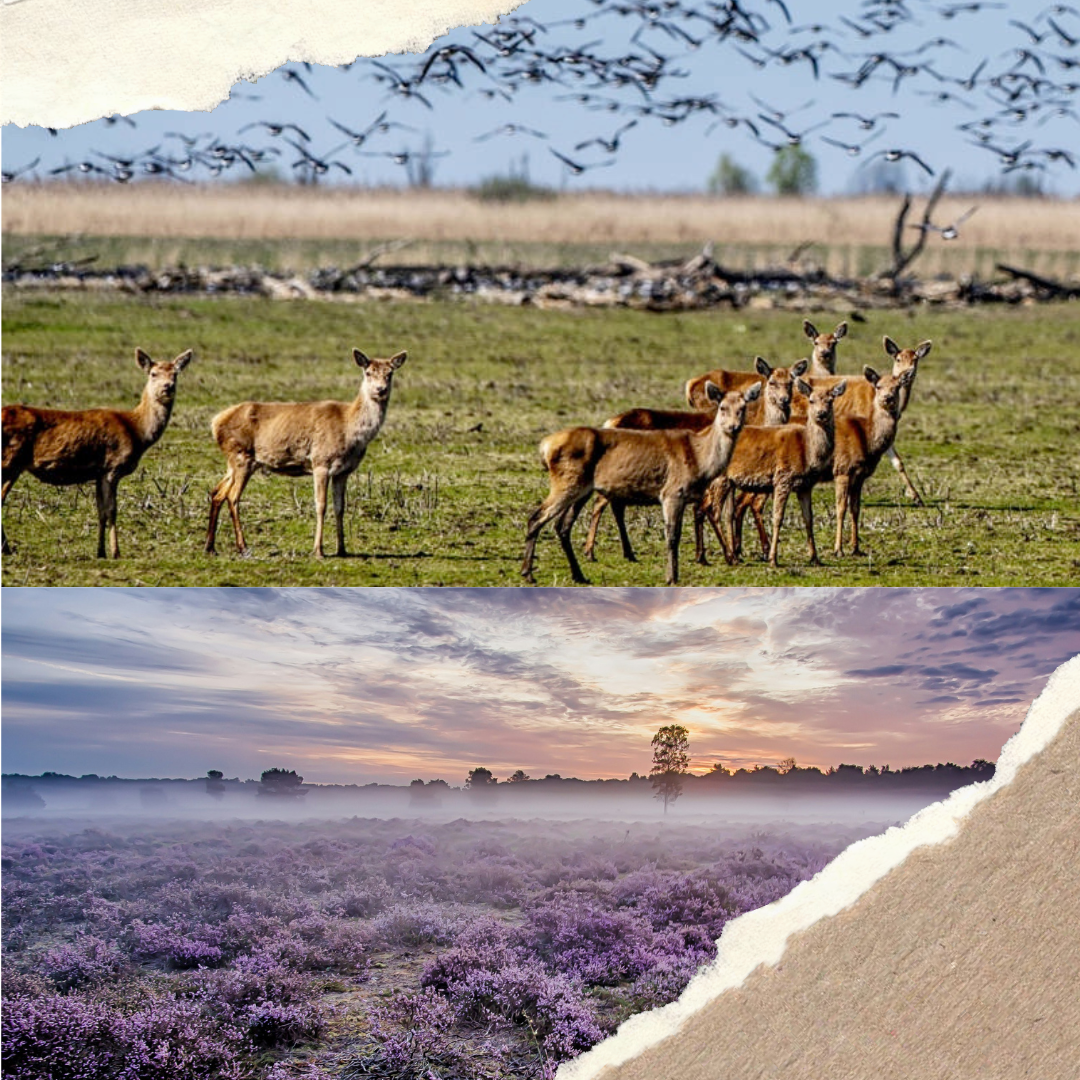Rewilding Europe: Impact and Evolution of Conservation Efforts

In recent years, conservation strategies all around Europe have witnessed a paradigm shift with the emergence of rewilding initiatives. Rewilding, a holistic approach to conservation, aims to restore and protect natural processes and wilderness areas, fostering biodiversity and enhancing ecosystem resilience. In this article I will review and dive into the impact and evolution of rewilding practices in Europe, with a particular focus on the Netherlands.
The Rise of Rewilding
As urbanization and agricultural expansion encroach upon natural habitats, the need for innovative conservation approaches becomes increasingly apparent. Rewilding, championed by conservationists and scientists, offers a promising solution. But before diving further into the efforts made over the years, what exactly is rewilding?
Rewilding is a progressive approach to conservation. It’s about letting nature take care of itself, enabling natural processes to shape land and sea, repair damaged ecosystems and restore degraded landscapes. Through rewilding, wildlife’s natural rhythms create wilder, more biodiverse habitats (Rewilding Europe). Its core principles involve reintroducing keystone species, allowing natural ecological processes to unfold, and creating expansive, interconnected wilderness areas.

One of the primary goals of rewilding is to enhance biodiversity by reinstating natural trophic interactions. Predators like wolves, once eradicated, are being reintroduced in certain European regions to regulate herbivore populations. Evaluating the success of such predator reintroductions involves monitoring changes in prey behavior, vegetation dynamics, and overall ecosystem health.
Conservation and rewilding in the Netherlands
The Netherlands, known for its progressive environmental policies, has become a focal point for conservation and rewilding experiments. The Oostvaardersplassen nature reserve exemplifies this approach, where large herbivores like Konik horses and Heck cattle roam freely. Here you’ll find a large swamp area with reed plains, rugged grasslands, water ponds, surrounded by forests: a true bird paradise of international value. More than 50 years ago, nature created this swamp area in southern Flevoland. Geese, spoonbills and cormorants soon found their way to the Oostvaardersplassen, as did deer, foxes, hares, bats and butterflies. And since 2006 even the white-tailed eagle has been breeding there. In this bird-rich swamp area, people and nature work together in a special way.

This is just one of many examples that make the Netherlands a leader in the shift towards more holistic conservation approaches to both protect our biodiversity and also mitigate climate change effects. Currently, 26.5% of terrestrial territory of the Netherlands is designated as protected areas, which is above the EU value of 26.4%. The EU Biodiversity Strategy has set a target of reaching 30% protected area coverage at the EU level by 2030. In the marine waters of the Netherlands, protected areas coverage is currently at 26.14%, which is above the EU value of 12.1%. Overall there are 305 species protected under EU law within Dutch borders and 52 protected habitats.
Europe-wide Conservation Efforts
One way of safeguarding Europe’s biodiversity is with Natura 2000 areas. These are a network of the most valuable European nature reserves developed by the European Union. This network of protected areas must ensure that no more plants and animals disappear. Most countries in the EU agreed to fully commit to this initiative. As of 2023, there are 198 Natura 2000 protected areas in the Netherlands. In the image below you can see all designated sites in the Natura 2000 network in Dutch terrestrial and marine borders.

LIFENature, is another great example of what can be achieved when international collaboration is celebrated amongst European countries. For the protection and development of the valuable Natura 2000 areas in Europe, the European Union has established a financing program: Life Nature & Biodiversity. The aim is to protect habitats, animal and plant species that are of special value for biodiversity on a European scale.
Challenges and Policy Implications
Despite its promise, rewilding faces challenges and controversies. Conflicts with local communities, concerns over safety, and debates about the ethics of introducing large predators are common. Assessing the social, economic, and ethical dimensions of rewilding is crucial for understanding its broader implications.
The success of rewilding initiatives hinges on effective policies that balance conservation goals with societal needs. An examination of the regulatory frameworks in European countries, especially in the Netherlands, can shed light on the role of government support, public engagement, and collaborative approaches in rewilding projects. Beyond biodiversity, rewilding contributes to ecosystem resilience in the face of climate change. Restored habitats often sequester carbon, mitigate flooding, and provide refuge for species adapting to changing environmental conditions.
Looking Ahead
As Europe continues to dive further into the complex interplay between human activities and natural ecosystems, rewilding stands as a beacon of hope. However, a nuanced understanding of its impact is very important for refining conservation strategies and ensuring the coexistence of thriving ecosystems and human communities.
Hopefully this article gives you more insight into the transformative potential of rewilding in European conservation practices, using the Netherlands as a lens to examine its impact on biodiversity, ecosystem resilience, and societal dynamics. With this review I hope to contribute to the ongoing dialogue surrounding the future of conservation in Europe. It can have a huge impact in leading with example for conservation efforts globally. As rewilding continues to evolve, a holistic and critical perspective is indispensable for shaping effective and sustainable conservation strategies.
If you’re interested to learn more you can read IUCN Rewilding Resources! Don’t forget to also check out these Duurzame Student articles:
